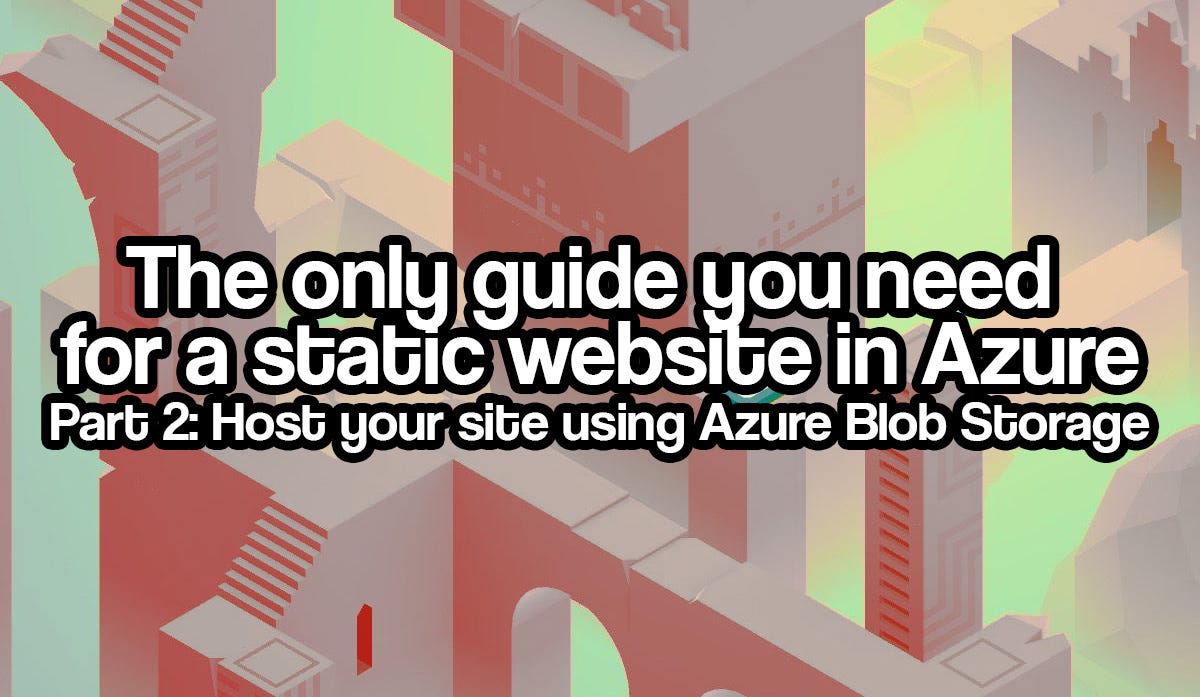If you are reading this, chances are you want to create your own static website, want to know more about static site generators, how to host your static website using Azure services, or how you can automate the full integration of your web code and the deployment of your site build. Either way, this series of blog posts is for you!
This article is part of a series that includes:
- The only guide you need for a static website in Azure — Part 1: Create a static website. In this article I cover what a static website is, what there is to choose from and how to create a (local) static website.
- The only guide you need for a static website in Azure — Part 2: Host your site using Azure Blob Storage. In this article I cover how you can host your static website in Azure Blob Storage, what there is to choose from, and some basics around Content Delivery Network (CDN). You are here now.
- The only guide you need for a static website in Azure — Part 3: Automate using Azure DevOps Pipelines. In this article I cover what the Azure DevOps services are, and how to automate the build and deployment for your static website to Azure storage.
Let’s get started. In this article, we’ll cover the second part: Host your site using Azure Blob Storage.
Understanding Azure Blob Storage
Azure Blob Storage is Microsoft’s object storage solution in Azure. Blob storage is for storing blobs (binary large objects), which is unstructured data. This is data that does not conform to certain data models or definitions, such as text or binary data. Blob storage consists of three types of resources: the account, the containers in the account, and the blobs in the containers (see image below).
Image by Rolf Schutten on Schutten.cloud
By default, storage accounts are publicly accessible. However, the containers and blob objects are not. Obviously you can customize the access levels to your needs. The files are accessible (considering your access levels and permissions) via a URL with the format https://youraccountaccount.blob.core.windows.net/yourcontainer/yourblob.
If you want to learn more about Azure Blob Storage, Microsoft has extensive documentation available for this object storage solution.
Azure Storage redundancy
Azure Storage offers a number of redundancy choices. Below is an explanation of these choices. You can find all this information on the Microsoft Docs site as well. The costs and the durability of objects increase in sequence. This means that the higher the durability of objects, the higher the costs. For the exact and most current prices, visit the Azure Blob Storage Pricing page.
#azure #devops #blogging #technology
